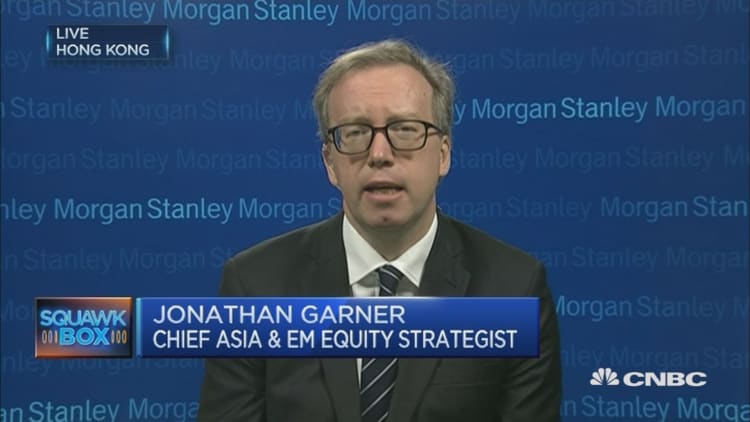Emerging markets have taken a hard beating since President-elect Donald Trump's surprise victory in November saw the dollar soar, interest rates climb and U.S. equities near historic highs.
The most popular emerging markets exchange-traded fund (ETF), the EEM, whose top-weighted holdings include Samsung, Taiwan Semiconductors and Tencent Holdings, fell 6.51 percent in the fourth quarter. By contrast, the S&P 500 ETF gained 3.34 percent for the same period.
BNP Paribas Investment Partners' senior investment strategist, Daniel Morris, however, is not too concerned because he reckons the negative impact will be short-lived due to the maturity, diversity and size of EMs.
"All those fundamental reasons to like EM are there," Morris said Monday on CNBC's "Squawk Box," referring to the region's potential for earnings growth, revenue growth and lower margins. He added EM currencies remained undervalued against the dollar, which left room for them appreciate in the future.

In the debt market, foreign investors pulled out $23 billion from emerging market portfolios since early October, including $18 billion since the U.S. elections, Reuters reported in December, citing data from the Institute for International Finance.
The outflow is set to weigh on EM debt in the short run, but Morris said it would also offer a "really attractive entry point" for investors to get back into the market, starting likely from the second quarter of 2017.
"I don't think you need to rush into EM right now, but it makes sense to be adding to it because over a 3-year horizon, you're likely to do much better," he said.
Morris is not the only one calling for investors to show patience toward EMs, even as U.S. yields climb and EM currencies struggle against the dollar.
There have been concerns raised over what the trade policies of the U.S. would look like in the future, following the protectionist rhetoric Trump echoed throughout the campaign trail, including the threat to impose a steep tax on Chinese imports.
Last December, Credit Suisse said many EMs, including populous countries such as China and India, had lower exposures to export-driven growth models due to large domestic consumer bases.

Other commentators think the proposed fiscal stimulus in the U.S. may not immediately translate into the kind of benefits that Trump had promised and investors are betting.
From EM equities perspective, Jonathan Garner, MD and chief Asia and EM equity strategist at Morgan Stanley, is overweight on Taiwan, India and the on-shore Chinese markets.
He told CNBC's "Squawk Box" the Taiex, which gained nearly 11 percent in 2016, had a strong story of company earnings delivery. India, which under-performed in the previous year, is expected to bounce back from the short-term effects of demonetization, while on-shore China was undergoing "an asset class rotation story," away from property and bonds, which became overheated last year, to stocks, Garner said.
Garner added he was cautious on South Korea due to weakness in domestic grow and a weaker won.


